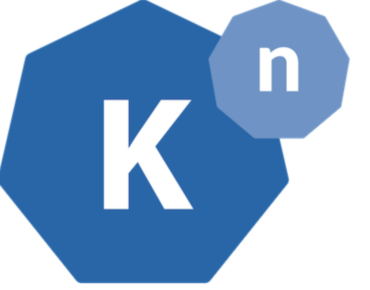Knative Meshes Kubernetes with Serverless Workloads

Google Cloud’s Knative initiative launched in July is expanding to include an updated version of Google’s first commercial Knative offering along with a batch of new distributions based on serverless computing framework.
Knative is a Kubernetes-based platform for building and managing serverless workloads in which cloud infrastructure acts as a server for managing the allocation of computing and storage resources. It is being offered as an add-on to Kubernetes Engine used to orchestrate application containers.
Along with the release of an updated Kubernetes serverless computing add-on, Google (NASDAQ: GOOGL) said Monday (Dec. 10) that IBM (NYSE: IBM) and its soon-to-be Red Hat unit along with SAP (NYSE: SAP) have announced commercial versions of Knative.
Knative is intended to ease integration of functions like automated container building and autoscaling on top of the Kubernetes cluster orchestrator. Along with a serverless capability, the integration would provide Knative applications that can run either on-premises or in the public cloud, Google noted in a blog post.
Those workloads include batch, machine learning, serverless and stateful applications.
Meanwhile, partners have begun releasing commercial versions of Knative. IBM is supporting the serverless framework on its cloud Kubernetes service while Red Hat (NYSE: RHT) has integrated it into its OpenShift application container platform. SAP is using Knative as part of its cloud platform and the open source Kyma project designed to extend enterprise applications to cloud-native formats.
Other early adopters of Knative include enterprise platform developers Pivotal (NYSE: PVTL) and TriggerMesh. Google said Pivotal is using the Knative API for serverless functions like workload portability. Meanwhile, TriggerMesh, a startup launched earlier this year, has developed a hosted serverless management platform running on top of Knative.
These and other deployments based on the serverless workload manager are designed to leverage the Kubernetes orchestrator for new hybrid cloud use cases, Google said.
"The serverless paradigm has already demonstrated that it can accelerate developer productivity and significantly optimize compute resources utilization,” said Reza Shafii, Red Hat’s vice president of product, platform services. “However, serverless offerings have also historically come with deep vendor lock-in.”
Shafii argued that the making Knative available on OpenShift would expand access to serverless technology while “minimizing lock-in.”
“Knative is a key technology that enables the community to unify containers, apps and functions deployment on Kubernetes,” added Jason McGee, vice president and CTO of IBM Cloud Platform.
Related
George Leopold has written about science and technology for more than 30 years, focusing on electronics and aerospace technology. He previously served as executive editor of Electronic Engineering Times. Leopold is the author of "Calculated Risk: The Supersonic Life and Times of Gus Grissom" (Purdue University Press, 2016).











